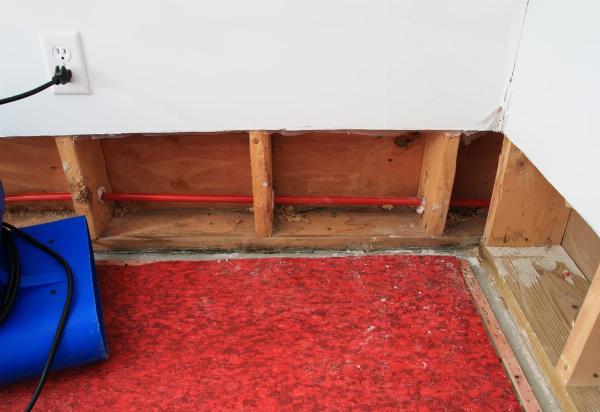How to Safely Remove and Dispose of Water-Damaged Materials

Strong 8k brings an ultra-HD IPTV experience to your living room and your pocket.
Water damage can be a serious issue for any property, leading to extensive damage and potential health risks if not addressed promptly and correctly. If you're dealing with water-damaged materials, it's essential to handle the removal and disposal process carefully to ensure safety and prevent further issues. Here’s a guide on how to safely remove and dispose of water-damaged materials, with insights from a water damage restoration company in NJ.
1. Assess the Extent of the Damage
Before you begin the removal process, it’s crucial to assess the extent of the water damage.
Inspection: Examine the affected areas to determine the level of damage. Look for signs of mold, mildew, and structural damage. If the damage is extensive or affects structural components, consider contacting a professional water damage restoration company in NJ for assistance.
Safety First: Ensure that the area is safe to enter. Water damage can compromise electrical systems and structural integrity, so make sure to turn off electricity to the affected area and assess the stability of floors and walls.
2. Remove Standing Water
The first step in dealing with water-damaged materials is to remove any standing water.
Use Pumps and Wet/Dry Vacuums: For significant water accumulation, use submersible pumps to remove standing water. For smaller amounts, a wet/dry vacuum can be effective. Ensure that you follow safety guidelines and wear appropriate protective gear, such as gloves and waterproof boots.
Dehumidifiers and Fans: Once the standing water is removed, use dehumidifiers and fans to dry out the affected area. This helps prevent mold growth and further damage.
3. Remove Water-Damaged Materials
Next, focus on removing water-damaged materials, which may include drywall, insulation, flooring, and personal belongings.
Drywall and Insulation: Cut out and remove water-damaged drywall and insulation. These materials are porous and can harbor mold if not removed promptly. Use a utility knife to cut away the damaged sections, and be cautious of sharp edges.
Flooring: If flooring materials like carpet, wood, or laminate are water-damaged, they should be removed. Carpets and padding should be discarded if they cannot be thoroughly cleaned and dried. For hardwood or laminate flooring, assess if the material is salvageable; if not, it should be replaced.
Personal Belongings: Remove and inspect personal belongings that may have been affected by the water. Clean or discard items based on their condition and material.
4. Dispose of Water-Damaged Materials Properly
Proper disposal of water-damaged materials is crucial to prevent contamination and comply with local regulations.
Check Local Regulations: Different municipalities have specific guidelines for disposing of water-damaged materials. Check with your local waste management facility or a water damage restoration company in NJ for proper disposal procedures.
Separate and Bag Materials: Separate different types of materials (e.g., wood, drywall, carpet) and bag them securely. Use heavy-duty trash bags or containers to prevent leakage and contamination.
Avoid Contamination: Ensure that the materials are not disposed of in regular household trash, as they may contain contaminants. Use designated disposal services or contact your local waste management facility for guidance on disposal.
5. Clean and Disinfect the Area
After removing and disposing of damaged materials, clean and disinfect the affected area to prevent mold growth and ensure a healthy environment.
Clean Surfaces: Use a mixture of water and detergent to clean non-porous surfaces. For areas affected by mold, use a cleaner specifically designed to address mold and mildew.
Disinfect: After cleaning, disinfect surfaces with a solution of water and bleach (or a commercial disinfectant) to kill any remaining bacteria or mold spores.
Monitor for Mold: Keep an eye on the area for signs of mold growth. If you notice any, take immediate action to address it, as mold can spread quickly and pose health risks.
6. Seek Professional Help if Needed
For extensive water damage or if you’re unsure about the removal process, it’s wise to seek professional help.
Water Damage Restoration Company in NJ: A professional water damage restoration company in NJ can provide expert assistance in removing and disposing of water-damaged materials. They have the tools, expertise, and experience to handle the situation safely and effectively.
Insurance Claims: Professionals can also assist with insurance claims by documenting the damage and providing detailed reports.
Conclusion
Safely removing and disposing of water-damaged materials is essential to mitigate damage, prevent mold growth, and maintain a healthy living environment. By following the steps outlined above and seeking professional assistance if needed, you can effectively manage the aftermath of water damage.
A water damage restoration company in NJ can provide valuable support throughout this process, ensuring that your property is restored to its pre-damage condition. Remember, addressing water damage promptly and thoroughly is key to preventing long-term issues and protecting your home.
Note: IndiBlogHub features both user-submitted and editorial content. We do not verify third-party contributions. Read our Disclaimer and Privacy Policyfor details.


